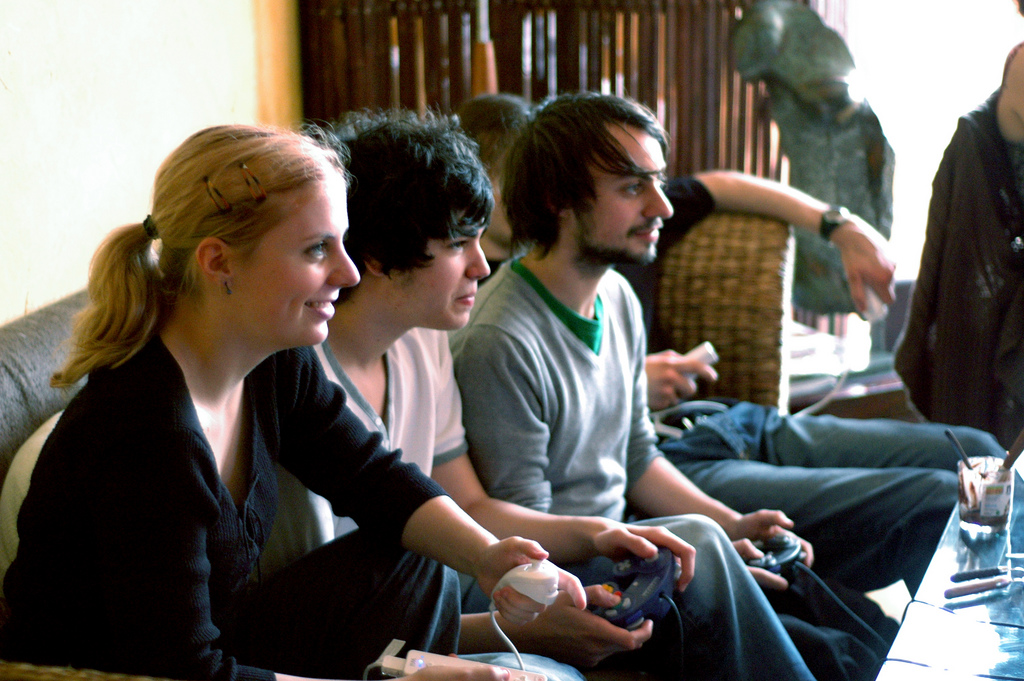
Like anything in life, learning mistakes the hard way as a game designer is anything but fun. Whether it be an unfair boss or boring mandatory quest, there’s nothing worse than releasing a game only to receive several comments complaining about the same thing. There will always be a number of gamers who dislike something (or your game entirely!), but to have a lot of players show frustration over the same element means you probably should have realized it would be a problem beforehand.
That is why we’d like to add to our previous list of common mistakes. Having any of these in your game doesn’t necessarily mean it will fail; they’re simply some things most gamers don’t find very fun. As a game designer, your job is to help players have fun every step of the way.
1. Bad Enemy Spawning
There are a number of things than can be done with enemy spawning that can frustrate players. For one, spawning too many enemies so players get bored or overwhelmed. The former is a mistake many felt Bungie did with Destiny; players couldn’t help but yawn as wave after wave of enemies appeared in certain rooms. Making sure an appropriate number of enemies spawn can be tough, but necessary to make sure the difficulty feels balanced. We’ve all played a game where you walk into a room and immediately die from a million enemies swarming you.
A lesser mistake but still worth mentioning is how the enemies spawn. Most would argue that we’ve reached a point technology-wise where players should never actually see enemies spawning out of thin air. This makes it hard to suspend our disbelief while giving the impression that we’re playing a game that HAD to do this due to technical limitations. At least make them come through a door, hole, or portal—not a random corner in the room.
2. Unskippable Cutscenes or Long Dialogue Scenes
It’s no secret that 2015’s The Order: 1886 didn’t fair too well with both critics and players for several reasons. It didn’t help that Ready At Dawn thought their cutscenes were gorgeous enough that no one should ever be able to skip them. The visuals were amazing but a player should never have to sit through a non-interactive moment if they don’t want to. These are games we’re playing, after all.
Similarly, there are certain games that allow their dialogue scenes to go on for far too long. While RPGs are usually the culprit, it can be any genre. As a game designer, you should be able to tell when two characters, no matter how important the scene is, are talking too much to the point where players will start spamming buttons to get through it. It is all about options, and some players will appreciate a way to skip dialogue entirely and get to the action.
3. Uncreative Quests
It’s a lot to ask of any game developer to make every single quest entirely unique and complete with its own story, enemies, cutscenes, and even gameplay. There’s nothing wrong with having typical quests like fetch quests, escort quests, gather X number of Y, killing a specific enemy; but you should add some spice to each one. Players have done similar quests already in other games, which means you should put more time and effort into them.
One way is to have an interesting story like Skyrim’s “Waking Nightmare” quest that has an entire village going insane due to nightmares. Trade sequences are fine if the reward is great and the NPCs you interact with are interesting, like the one in Ocarina of Time. Puzzles, surprise boss fights, dramatic choices—use your imagination to make every quest memorable and fun.
4. Mandatory Tutorials
This is a problem we have touched on in other pieces before. Hand-holding tutorials are one of the easiest ways to annoy players right off the bat. The problem with unskippable tutorials is that you’re assuming the player has never played a video game before when they’ve probably played many just like yours.
If you do add a tutorial, design it so it doesn’t feel like one. The first Gears of War is a great example because the tutorial can be skipped and involves an alternate, unique route to getting out of the initial area. Avoid insulting and/or boring veteran gamers by forcing them through a tutorial that teaches them how to use the thumbstick to walk, X or A to jump, etc.
5. Slow Starts
Along the lines of the previous mistake, one way to make gamers immediately grow disinterested in your game is with a slow beginning. Although considered amazing games overall, plenty of folks couldn’t believe how many hours it took to finally get into the meat of the game in both The Legend of Zelda: Twilight Princess and Skywards Sword. Assassin’s Creed III is also a recent culprit where players didn’t get to don the iconic white assassin attire until several hours into the game.
This doesn’t mean you can’t have some story in the beginning to set up the game. However, some players just want to get into the action and set off on their adventure as soon as possible. This goes along with our Mistake #2 where if you must have lots of cutscenes and dialogue at the beginning, it would be wise to make it skippable.
[su_note]Learn more about the School of Game Design at the New York Film Academy by clicking here.[/su_note]

